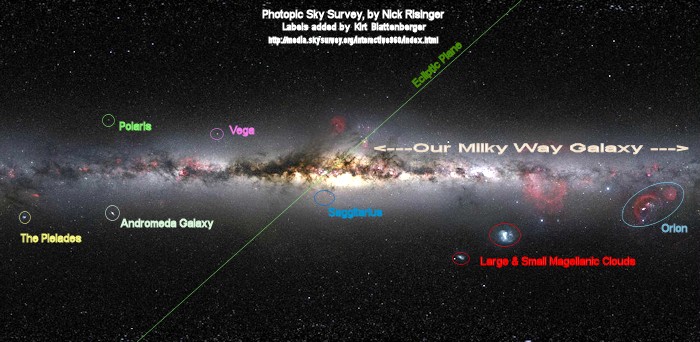Cool Pic Archive Pages
| 1 |
2 | 3 |
4 | 5
| 6 | 7
| 8 | 9
| 10 | 11
| 12 | 13
| 14 | 15
| 16 | 17
| 18 | 19
| 20 | 21
| 22 | 23
| 24 | 25
| 26 | 27
| 28 | 29
| 30 |
These images have been chosen for their uniqueness. Subject matter ranges from
historic events, to really cool phenomena in science and engineering, to relevant
place, to ingenious contraptions, to interesting products (which now has its own
dedicated Featured Product
category).
Nick Risinger decided it was about time
that somebody created a single image of the entire night sky. So, with the assistance
of his retired father, he dedicated a full year to photographing and then stitching
together data from 37,440 separate exposures. The pair covered 45,000 miles by air
and 15,000 miles by land. Braving thin, bone-chilling mountain air and wild animals
in the U.S. western states and the Northern Cape in South Africa proved in some
ways to be the easy part. The overwhelming task of sorting and processing the images
required the application of some pretty sophisticated software, and a huge learning
curve. Says Nick, "I divided the sky into 624 uniformly spaced areas and entered
their coordinates into the computer which gave me assurance that I was on target
and would finish without any gaps. Each frame received a total of 60 exposures:
4 short, 4 medium, and 4 long shots for each camera which would help to reduce the
amount of noise, overhead satellite trails and other unwanted artifacts."
An array of six cameras, each with a unique filter, was mounted on an equatorial
base so that it could track the movement of the stars across the sky. The result
is a gargantuan 5-Gpixel image. The entire file can be viewed online in the form
of an interactive Flash presentation. The basic version comes
without any labels,
but there is also a
labeled
version that superimposes constellation, nebulae, planet, and galaxy outlines
and labels over the base image. Details of the entire effort, including equipment
and software, is listed on Nick's SkySurvey.org website. An even more detailed story ("For All the Night's Stars")
appeared in the February, 2012, edition of
Sky & Telescope
magazine, which is where I first saw it. With the fairly recent culmination of relatively
low cost telescopes with 12" and larger objectives, low-noise imaging cameras, and
super-accurate tracking mounts, amateur astronomers are now creating astrophotos
that not just rival, but exceed the quality of those formerly the realm of million-dollar
telescopes and hypersensitized, high ISO film and the need for expert film developing
skills. NASA is now actually providing stipends to some amateurs (making them pros,
technically) for conducting surveys of specific regions of the sky - especially
for detecting objects that are in orbits that will cross dangerously close to the
Earth.

Photopic Sky Survey w/Labels
Posted January 17, 2012
|









